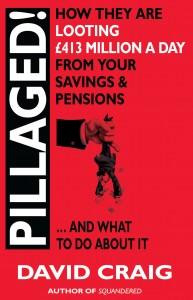There’s a small detail about the Cyprus crisis journalists seem to have missed.�Less than a year ago, the Bank of Cyprus was paying interest of up to 9%. How did it manage to do that when interest rates in the rest of the Eurozone were 2% to 3%? The only�answer I can think of is that the bank must have been running a Ponzi scheme – paying depositors impossibly high�interest using money from new investors, while the bank bosses skimmed off millions for themselves�before the Ponzi scheme collapsed.
Here’s�the text from an announcement the now bankrupt Bank of Cyprus�made less than a year ago�in the Ukraine in order to attract deposits from rich Ukrainians. I believe the same announcement�ran in Russia.
Bank of Cyprus increased deposit rates for individuals��
�”Bank of Cyprus cares about long-term savings of its depositors, and therefore offers one of the most profitable conditions on the market for term deposits in foreign currency – says Head of Product Management Department PJSC �Bank of Cyprus� Anna Makarenko. – We increase the interest rates on deposits within the long-term balanced strategy of financing Ukrainian business.”
Deposits at Bank of Cyprus are protected by the Deposit Guarantee Fund and with the confirmed deposits reliability ratings by independent rating agencies.














Where is the safest country for my savings. Cyprus may have given Osbourne
an idea, and he certainly needs a few.
Buy precious metals, an attack dog and a gun
[…] How did the Bank of Cyprus manage to pay 9% interest on deposits? Ponzi? Ponzi? Ponzi? […]